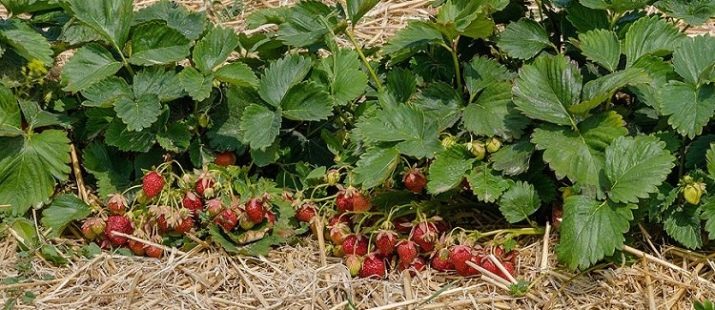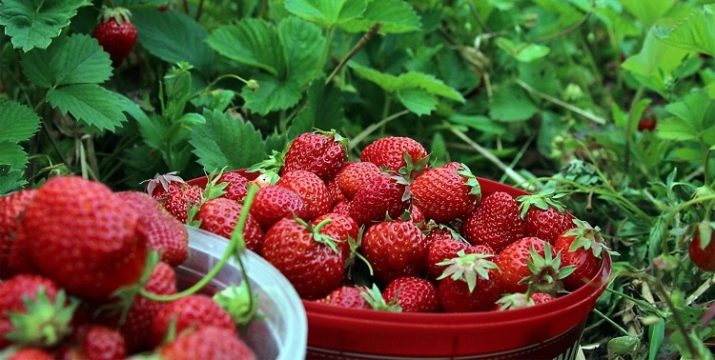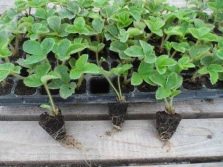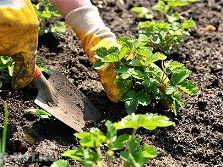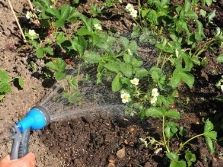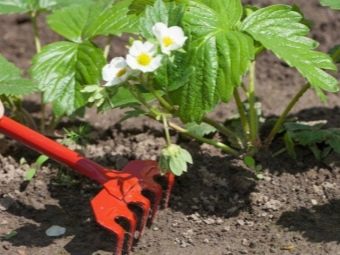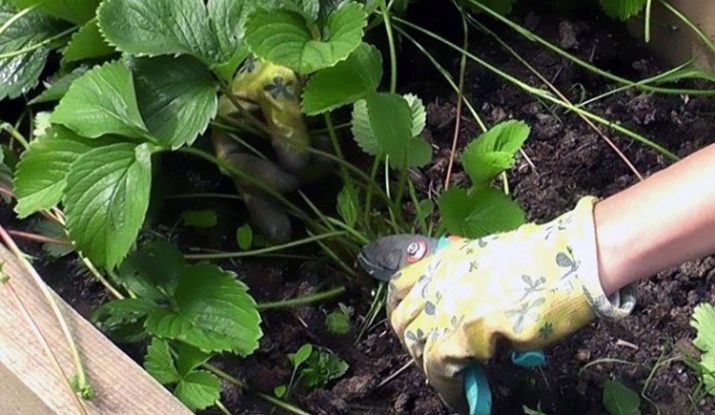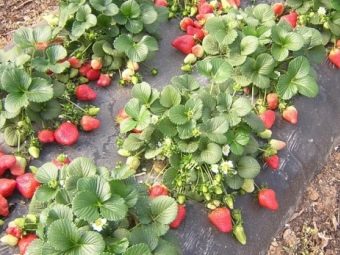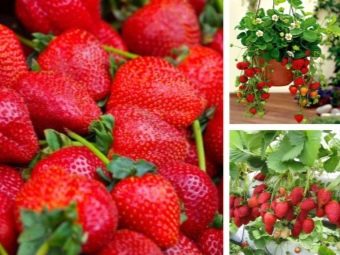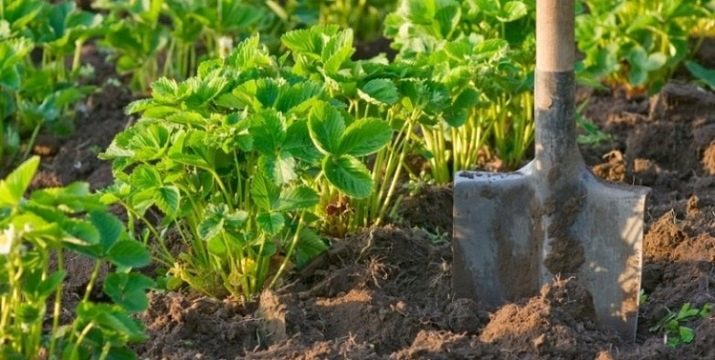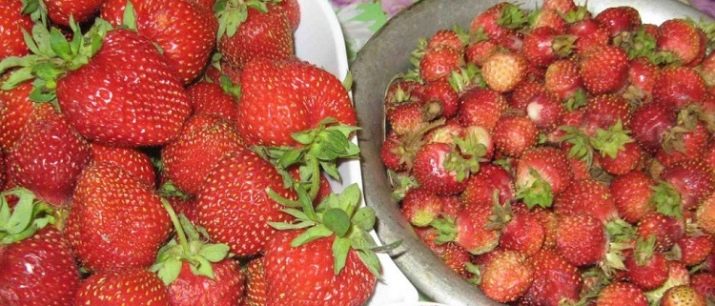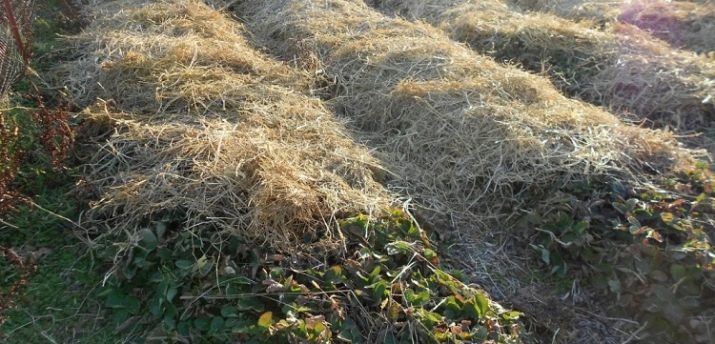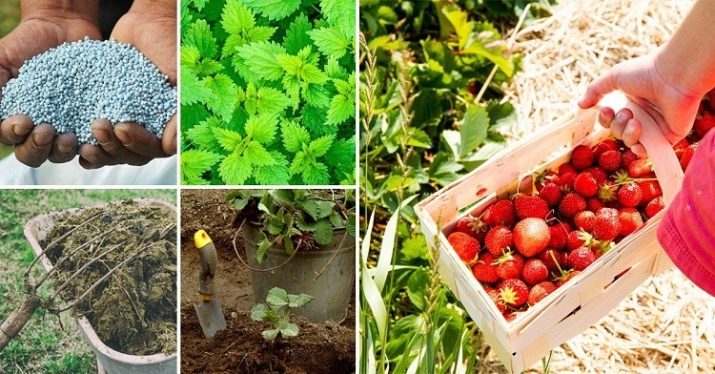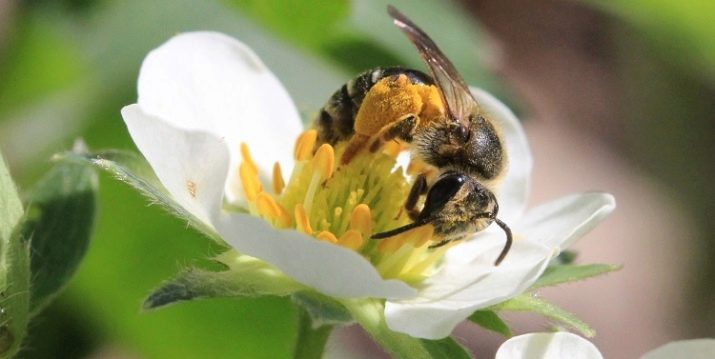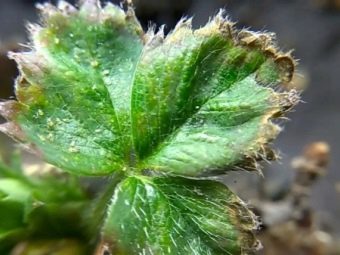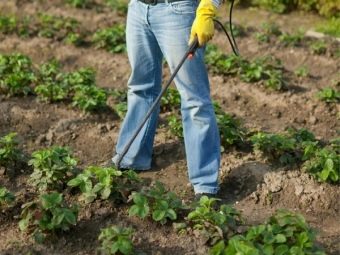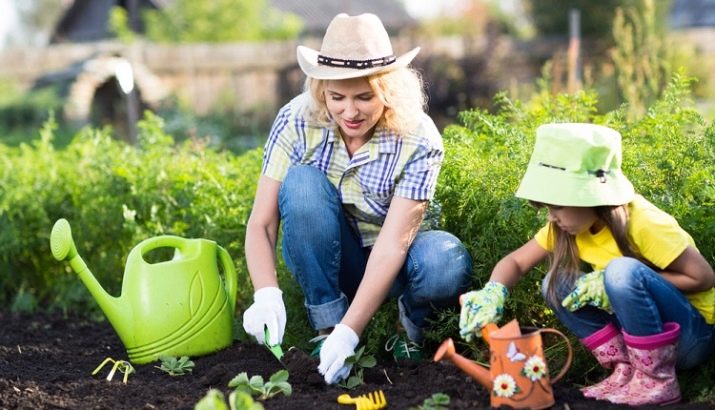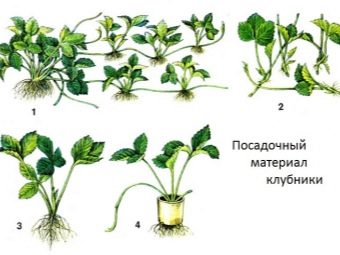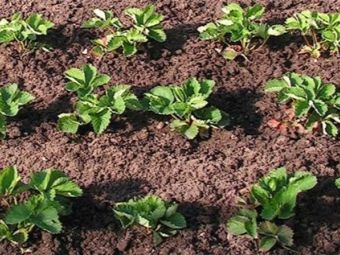Why small strawberries and what to do?
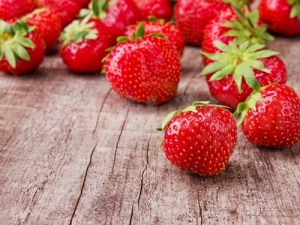
The main task of each fertile crop is to produce a rich, stable and high-quality harvest.Garden strawberries, grown in most regions of Russia, are presented in a huge variety, but regardless of the special characteristics of each gardener wants to get large and juicy berries. The number of crops is influenced by many factors. In the article we will describe how to deal with such a problem as small strawberries.
Introduction
To get the highest quality product you need to work hard. Experienced gardeners claim that any disturbance in the process of planting and growing affects the quality of the fruit. Dry berries of small size - the most common problem faced by both experienced gardeners and novices.
Despite the variety of resistant varieties with strong immunity, strawberries are considered capricious fruit crops that require careful and timely care. In order for garden strawberries to bloom well and give juicy fruits, it is necessary to follow clear recommendations of the agrotechnology of each individual variety at all stages of cultivation.
There are many reasons due to which even the most fruitful and unpretentious varieties give small and sour berries. If you notice that the strawberries on your site has become shallow, read the information indicated in the article.
Features of the variety
Each species of varietal strawberry has individual characteristics that must be reviewed before purchasing seed or seedlings. Residents of the northern regions choose strawberries that are resistant to cold. Gardeners who grow berries for sale, select species with excellent keeping quality and resistance to transportation.
If at the end of the season you want to harvest large berries, opt for species with exactly this characteristic. Information about this should be indicated in the description of the variety. Do not be lazy, take a little time to get acquainted with the features of a particular type.
Also, the problem may lie in the fact that not the variety that they expected to fall into the hands of summer residents. This is a common practice when buying seedlings on the market. In order not to be mistaken, it is necessary to buy seedlings from trusted buyers.
Small varieties of strawberries transmit their special varietal characteristics through the seed. With large-fruited species, things are different, so you can forget about reproduction with the help of seeds. Strawberries, giving large berries, are grown using vegetative propagation.
Plantation clogging
Small, dry, crooked and other low-quality berries, often left on the branches. This is not recommended for one reason. Getting into the soil, the berries begin to germinate and develop. The plantation is gradually clogged with low-yielding shrubs - the entire crop suffers as a result. Experienced gardeners point out that from poor seed to wait for a rich harvest of large berries should not be.
Seedlings of this type by most indicators are inferior to "parents." Moreover, such plants actively multiply, making it difficult for high-grade shrubs to grow and produce a stable crop. From year to year the planting will be filled with plants grown from small berries.
In order to prevent this, it is necessary to remove low-quality fruits in a timely manner before they fall into the ground and begin to germinate. It is also necessary to regularly inspect the site for the presence of weeds and, if they are found, immediately remove them.
How to detect weeds?
Shrubs of this type are called oak forests. To find such shrubs is easy, they have the following characteristics:
- big sizes;
- spreading;
- large leaves;
- small flowers Some may have no flowering at all.
Such shrubs give either small and not sweet berries, or do not bear fruit at all.
Plant age
If the strawberry has become shallow or the amount of harvest has drastically decreased, it may be time to change the shrubs. On old plants a large number of barren flowers is formed.In the flowering period, shrubs delight with lush flowers, but when harvest time comes, gardeners find only a few small berries.
Even if you only planted new shrubs on your land, you cannot be sure about their age. Only experienced agronomists can visually determine the age of the plant. Buying seedlings on the market with hands or from untested buyers, you risk spending money on low-quality goods.
Garden strawberry brings large fruits in the first 5 years of life. In subsequent seasons, strawberries begin to shred. After this period, you should update the planting, if you want to continue to get a harvest of large berries. Experts believe that the ideal period of strawberry bushes fruiting is 3 years.
The process of updating the plantation is recommended to be carried out gradually. To do this, shrubs are planted at different times and after update after the above terms. When evaluating the harvest, remember the varietal characteristics, some species give large berries in the first year, others - please with a large strawberry for the second season.
How to update correctly?
The main reason for updating plants should be gradual - some new shrubs may not settle down on a new site or give a crop. By the end of the summer, they begin to release the planting and plant new saplings.
Experts advise not to postpone the landing. New plants need to lay flower buds in a timely manner. If shrubs are accepted, next season you will be able to feast on large and juicy strawberries.
Quality of planting material
To get a rich harvest of the highest quality is possible only from high-quality and healthy planting material that meets certain requirements. It is noted that for breeding the bush, you can use 5 outlets on strawberry antennae, however, professionals recommend choosing the first, the strongest and most developed of them. By the time of transplantation, it should be mature and fully developed.
The rest of the sockets, which were used for growing seedlings, will give small berries. In subsequent seasons, shrubs may develop, and the harvest of berries will increase, but it is better to immediately use the strongest and fruiting plants.
Bad wintering
Most types of strawberries are not resistant to sub-zero temperatures. The only exceptions are frost-resistant varieties, but even they need additional protection. Snow can be used as a reliable insulation. Precipitations will reliably save shrubs from severe frosts. Make sure the snow lingers on the site.
As an additional insulation, straw, dry grass and spruce branches are also used.
After the end of winter, the risk for berry bushes remains until the season of spring frosts ends. Do not take shelter until the weather is warm outside. If you do not save the plant during frost, you should not count on a rich and large crop. In the worst case, the seedlings will die.
Carefully inspect the shrubs. If you notice that the flowers have a black heart, then there will be no fruit. Minus cooling during flowering is especially dangerous for the plant.
How to help the plant survive the winter?
Before you send shrubs for the winter, you need to feed them. Nutrient elements in the fertilizer will help plants cope with frost. Used as ready-made formulations sold in stores, and home-made mixes. Complex, organic and other types of fertilizers are introduced into the soil, depending on the composition of the soil and other characteristics.
After the frosts have receded, it is recommended to use leaf dressings (the leaves are treated with shrubs). They contribute to abundant fruiting.
Pollination
Pollination is an important aspect in the formation of berries. If the strawberry has grown shallow and sour, perhaps the problem is that there was no pollination.The reason may be adverse weather conditions, when the flowering season falls on the season of rains or cold snaps. During this period, the bees will not be active and, therefore, will not be able to carry out full pollination.
Also the heat and excessive neglect of planting can adversely affect insect performance. Due to the lack of pollination, the yield will decrease by several times.
Pests
Attacks from harmful insects weaken plants. As a result, the berries dry and shrink. The main pest that threatens the strawberry crop is the strawberry weevil. Insect lays eggs in closed buds. After that, flowering, and, accordingly, fruiting, does not occur. The spider mite is also harmful.
In order for the harvest not to suffer, it is necessary to carry out preventive actions in time, as strawberries grow. Carefully examine the bushes for signs of disease or pests.
Thickened landing
Thickened planting is one of the main reasons for the formation of small berries. In order for the plant to develop normally and enjoy the fruits, it needs to grow in comfortable conditions. The minimum distance between the bushes of strawberries is from 20 to 40 centimeters. If a tall variety is planted or the plant is actively growing in width, The minimum figure must be at least 40 centimeters.
When planting plants make sure that the bushes are from each other at the required distance. Saving a seat can result in low quality berries.
Additional reasons
Allocate the following.
- Watering. In hot regions, strawberries can suffer from a lack of moisture. As a result, dry berries are formed.
- Sunlight. Natural lighting is important for sweet and large fruits.
- Plot. Properly chosen landing site - a pledge of high-quality harvest. The best place is an illuminated area with fertile land, protected from the wind.
- Feeding. From strawberry fertilizer draws strength for fruiting. Shrubs are fed in the spring, before flowering and before hibernation. As a rule, organic and mineral compounds are used.
- Thinning. Antennae take away from the plant the forces that could be spent on the formation of large berries. In the process of growth of the bush, remove the mustache. For breeding, leave broods separately.
- Planting material. When breeding strawberries by dividing, use only those shrubs that give large and juicy berries. When buying seedlings, choose plants with a strong root system, free of defects and signs of disease.
In the next video, four rules are waiting for you to get a large strawberry.

